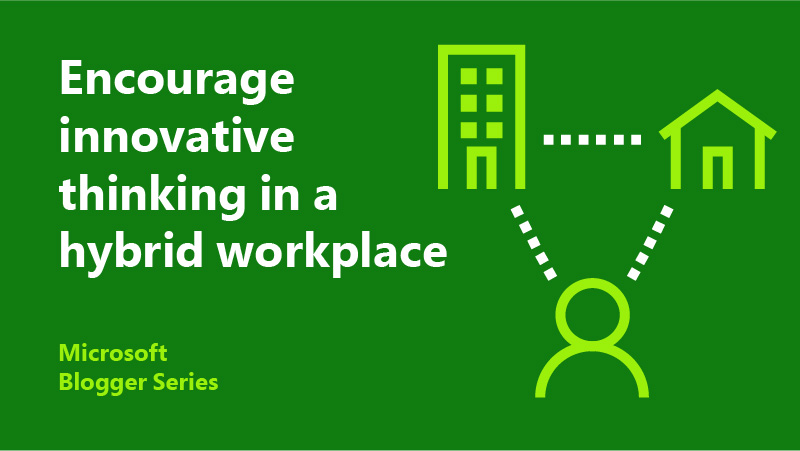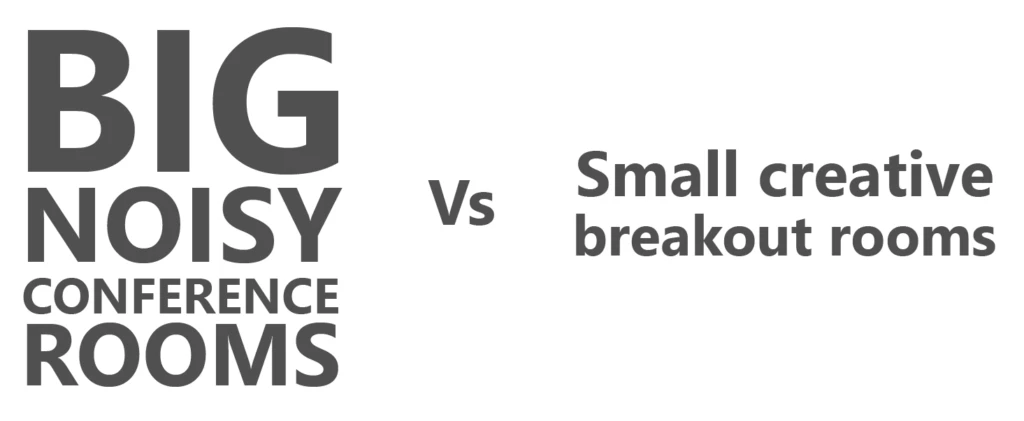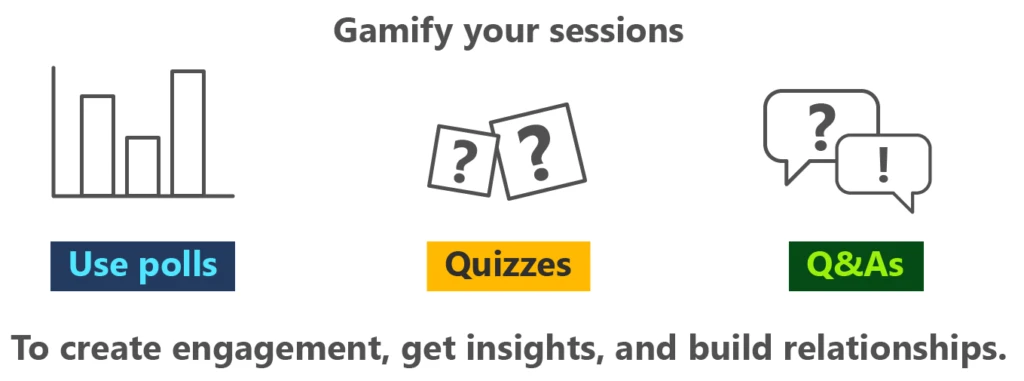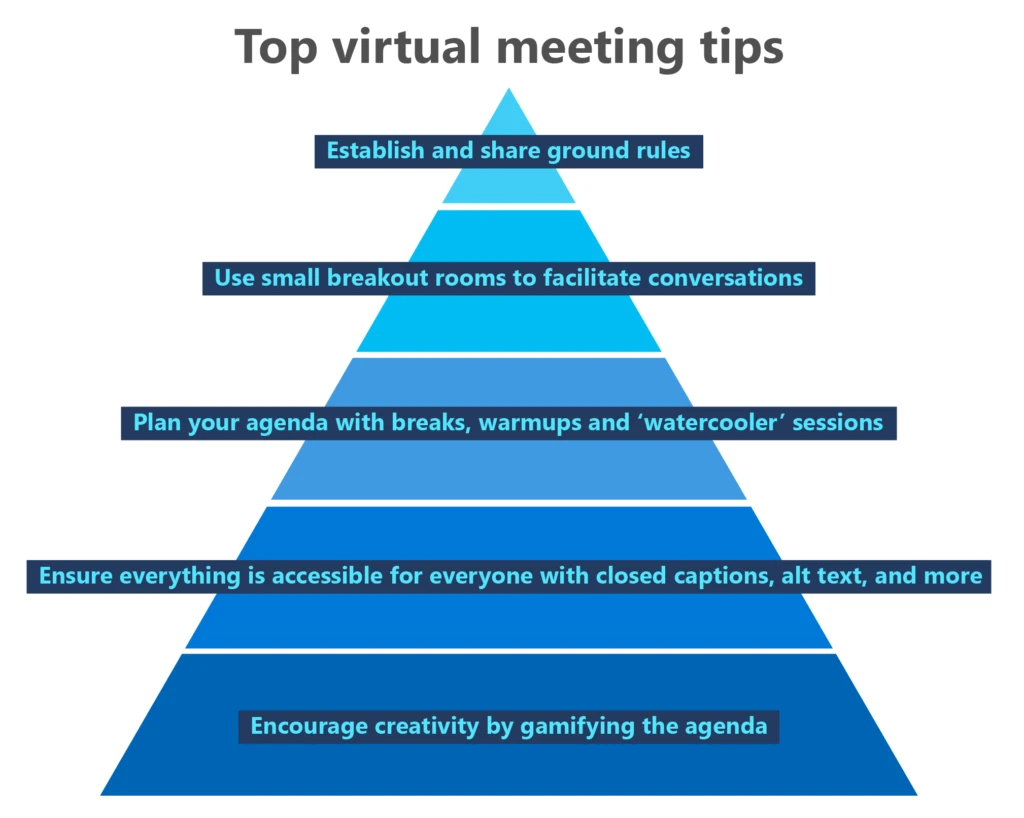
How to encourage creative thinking inclusively and remotely in the new world of work
Our workplace culture has changed in the last year. We’ve moved from physical to virtual, and in the future, we’ll be seeing a more hybrid approach. Organisations have rapidly adopted and leveraged digital tools. Team meetings, one-to-ones, town halls, and even after-work socials have moved to virtual. This has also meant brainstorming meetings, ideation and design activities have too. Yet often, these creative thinking sessions stereotypically are based on ‘being in the room’ harnessing the energy from that to create ideas.
But how do you run these sessions remotely while creating that same energy? How can you maximise productivity and return on investment of time and resources? Virtual meetings tend to require more thought and planning to enable and drive business results in an engaging and inclusive way.
We consider some of the underlying assumptions around working in the same physical space to map to a fully virtual way of working model for remote creative thinking sessions.

Moving on from traditional creative thinking sessions
It’s a general assumption that the investment of time (including travel), focus and energy is offset by generating innovative ideas. This leads to workshops and agendas which are coarse-grained, to maximise the investment in time people have set aside to contribute.
Being somewhere physically can lend itself more naturally to creating serendipitous moments and the feeling of connectedness. Yet, when organised correctly, these moments can be designed into a virtual event.
And when you factor in those other ideas such as travel, and focus, hosting a virtual event can improve those. A major benefit of virtual events is that there is reduced cost and no travel time – there may even be a reduced carbon footprint. This increased flexibility can result in increased attendance, allowing people to carve out the time and get themselves in the right headspace.
Now we have the digital tools to support virtual ways of working, it makes sense that people’s expectations have changed, and they’re more likely to expect virtual events in the future. A virtual event has the potential to be just as good as, or even more successful than a physical event.
What makes a good facilitator for a creative thinking session?
It’s important to remember that often ideation session attendees are diverse and in a lot of cases do not have close and pre-established working relationships. This means you need a good facilitator to help drive the session.
They will ensure that everyone is briefed on ground rules, agenda, objectives and required tools. Ongoing active facilitation manages the energy and focus of the group. When all are in the same physical location the facilitator can read visual cues. This needs to be done differently for virtual ideation sessions. Visible or declared accessibility needs can also be more explicit and actively catered for. We’ll go into some depth about how to manage these in the virtual environment.

How to flip from physical creative thinking sessions to virtual effectively
Examine your assumptions
- Video conferencing fatigue is real: Agendas should be much more granular in a virtual setting to ensure breaks.
- Introduce small breakout rooms to ensure everyone can share ideas.
- Establish ground rules.
Virtual accessibility
- Planning is key: Ensure you have accessibility factored in, such as automatic captioning.
- Consider everyone: Use the Accessibility Checker in your presentations and documents to ensure everyone can access them.
Virtual engagement
- Actively plan engagement: Use digital engagement tools to gamify sessions.
- Facilitate creative thinking: Implement warmups, games, and quizzes during breaks.
Virtual tools and processes
- Effective meetings take planning: Share a pre-brief of the tools and processes you will use so participants can familiarise themselves.
- Mistakes happen: Allow time in your agenda in case something doesn’t work right away.
Examine your assumptions for creative thinking sessions
When everyone joins remotely, we need to examine our assumptions of physical meetings. For example, we shouldn’t assume that all attendees have blocked out the half-day or whole day to collaborate. Conversely, we should be mindful that many will be sitting in their home office or living space. Agendas should be much more granular in a virtual setting. Allowing people the time to get away from their desk is a key part of this.
We should challenge our assumptions that workshops must be in a whole or half day event. Consider breaking up your agenda into ‘bites’. Make sure to include recap time to warm people back up. This also allows real time for consolidation of previous sessions and presentations of feedback and insights to guide the group forward.
This approach might mean more facilitation time is needed – potentially filling the time of two facilitators where one was previously enough.
Virtual inclusion
We all make assumptions of how we want to collaborate. Even if we’ve identified strategies to address our subconscious biases, inclusion requires extra consideration in a virtual setting. Virtual meetings have the potential to be a great leveller, where everyone is starting from the same place.
One useful strategy for driving inclusion in diverse groups is to task attendees to write an ‘about me’ slide which is shared ahead of the session. This can outline things such as:
- How I like to work
- My areas of expertise
- What I am hoping to get out of the session
- How I prefer to communicate
Facilitators can also use this to look at the balance of perspectives, objectives and experiences in the team. They can also allocate individuals to breakout groups to maximise diversity or concentrate expertise (as appropriate).
 Another useful approach to drive inclusion is to structure your agenda around smaller group breakouts, followed by share backs with the wider group. Smaller groups still need an element of facilitation. However, generally the smaller the group the more opportunity everyone has for their voices to be heard.
Another useful approach to drive inclusion is to structure your agenda around smaller group breakouts, followed by share backs with the wider group. Smaller groups still need an element of facilitation. However, generally the smaller the group the more opportunity everyone has for their voices to be heard.
Ground rules are also important to establish. Brief attendees to try to be more self-aware and to actively give each other airtime. Establish the use of the ‘Raise hand’ feature in Teams when they want to speak, for example.
In some cases, we have even seen virtual meetings become a cultural leveller, as they flatten organisation hierarchies – for example by reducing deference that team members might have for their boss in a physical setting.
Virtual accessibility
We need to actively plan for specific accessibility needs in virtual settings. In a physical setting visual cues may make accessibility needs more present. Yet, a remote setting may even be an enabler through the use of accessibility features in digital tools such as live captions. Like in physical settings, planning is key.
Virtual engagement for creative thinking
Engagement needs to be more actively planned. Warmups and ice breakers need to be more part of the agenda. Digital tools can help defend against distractions. Asking people to be present is a start. But techniques such as regular voting and gamifying participation can drive engagement. It can also help deliver feedback to facilitators on the level of group engagement and attention, and where help and coaching may be needed.
Consider side challenges – for example quizzes or cryptic puzzles, with prizes awarded to inject purpose. Creativity is your only limit. Make things fun! Equally, actively encourage breaks more regularly than you would with a typical set of back-to-back meetings.

Virtual tools and processes
There are many established design practices and tools to utilise which will help you establish the right methodology, tools and templates. Yet, we should be mindful of how these need to be modified, extended or changed for virtual meetings. Effective physical meetings require preparation. So do virtual meetings.
You’ll need to standardise the overall working method and toolset ahead of time, sharing this and encouraging people to try it out before the meeting. From a process perspective, a small working group should define the process based on objectives and create things like required templates, breakout meeting groups and process guides. And for the first time you try this, allow for things to go wrong by with extra time in your agenda – as they probably will.
Creating engaging experiences for everyone
Where do we get our best ideas from? Diverse groups where everyone has a voice to share their thoughts. That’s why ideation sessions are an essential business tool to solve the problems of today and create the opportunities of tomorrow.
And because we’ve moved more to virtual meetings, this means more people can take part, solving challenges quicker and building new ideas. When done in a clear and structured way, they can maximise human creativity and drives business results.
Creativity never needs to stop – even in a hybrid or remote working environment.

Find out more
Reimagine the new world of work
Discover how to respond to the new world of work with leadership, culture and practice
About the author
 Terry Room is currently a Managing Architect for Microsoft Consulting Services in the UK. With over 20 years of technology industry experience, he leads a cross disciplinary team of consulting architects and digital advisors, with a focus on driving large scale business and technology transformation with strategic enterprise customers through the design of compelling business cases, resilient technology architectures, and transformation programmes which deliver sustainable business value.
Terry Room is currently a Managing Architect for Microsoft Consulting Services in the UK. With over 20 years of technology industry experience, he leads a cross disciplinary team of consulting architects and digital advisors, with a focus on driving large scale business and technology transformation with strategic enterprise customers through the design of compelling business cases, resilient technology architectures, and transformation programmes which deliver sustainable business value.




